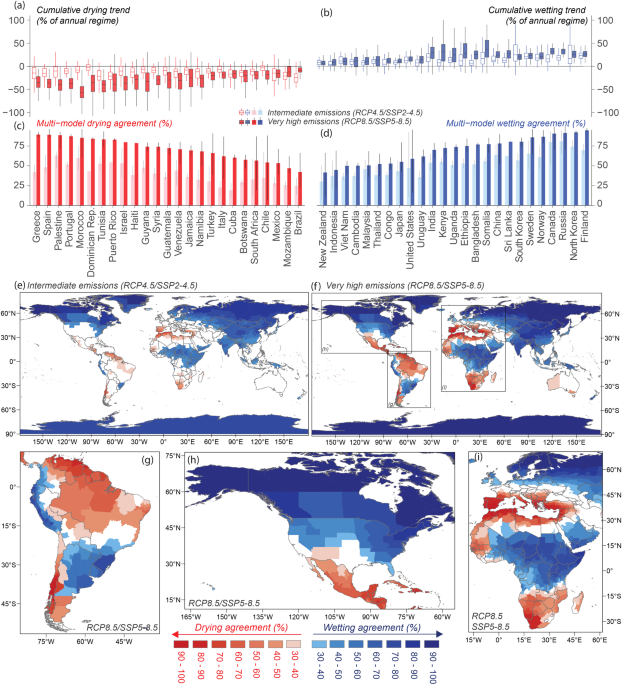Looks like most of the US will get wetter, with the exception of Texas and California
This study seems to have just plotted the trends from the past, and extended those results into the future, which is fair. But, I’m not sure it takes into account all the other systems that will change or collapse as a result of global warming.
For example, what happens when there’s no ice at the poles, and the Gulf Stream grinds to a halt? Will Northeastern North America still experience a wetting?
While this is nice to keep in mind if everything maintains status quo, I’m not sure I would want to stake my life on it.
"By using non-parametric trends30,31 and considering an ensemble of 146 CMIP533 and CMIP634 climate model runs (Tables S1 and S2), we identify regions where wetting and drying patterns converge across the globe. Our trend-based approach aligns with the continuous nature of radiative forcing35, provides flexibility and robustness in detecting and quantifying global warming-induced changes, and effectively controls for natural variability36.
Our innovative approach (see “Methods”) evaluates the entire time-series using no interannual averaging and combines information from the fullest range of GCM projections available to determine their agreement and the extent of precipitation impacts with no ensemble aggregation. This is important because each set of simulations provides a plausible storyline of future precipitation patterns under elevated global warming, rather than using aggregated data which can obscure important trends and patterns."
Read the methods before commenting on them please. This study uses 146 different simulation models and takes a non-averaged agrigate to generate the final projections.
Damn, we’re basically invincible down here in Australia. Suck shit NZ enjoy your extra sky water.





